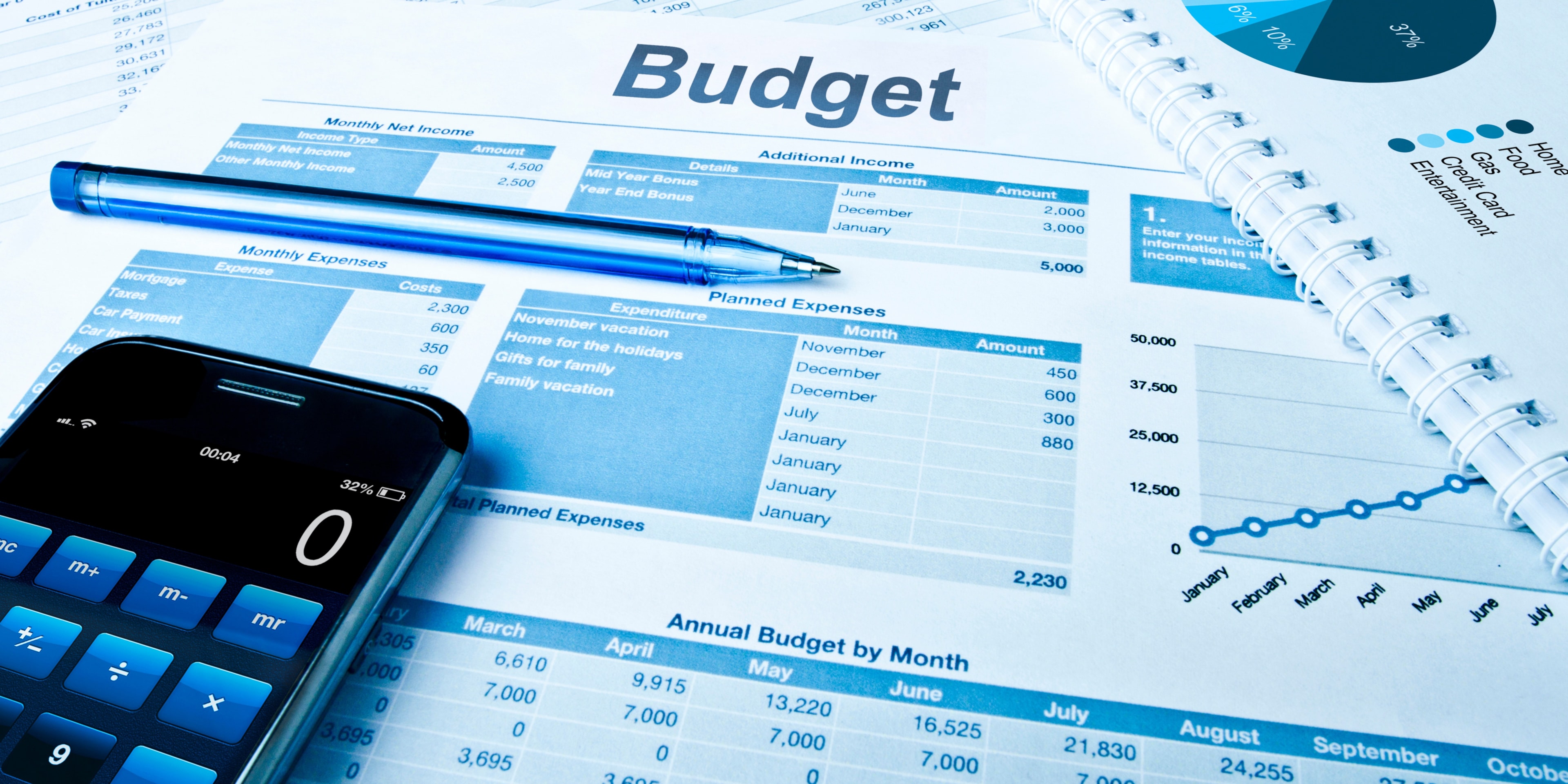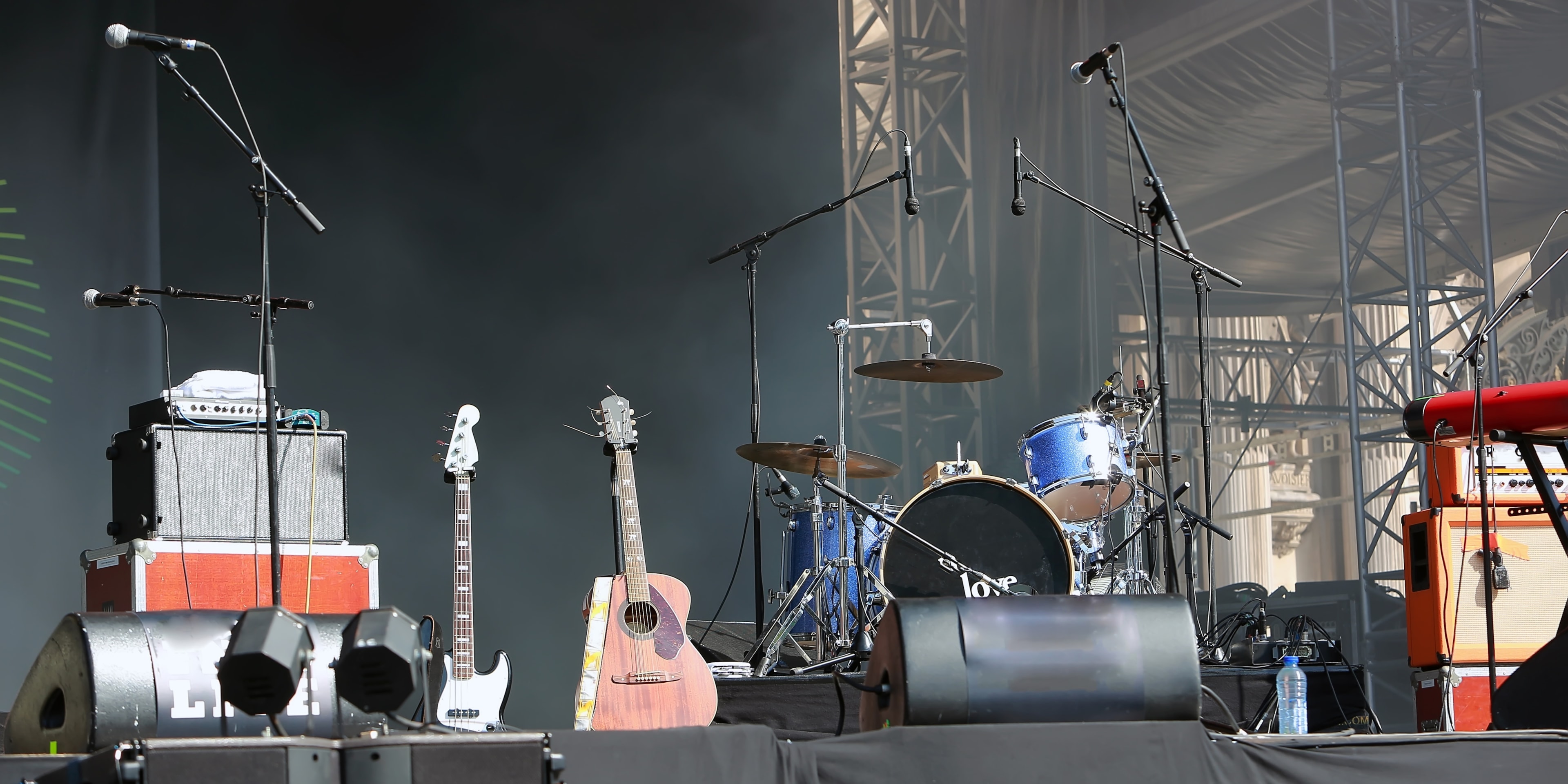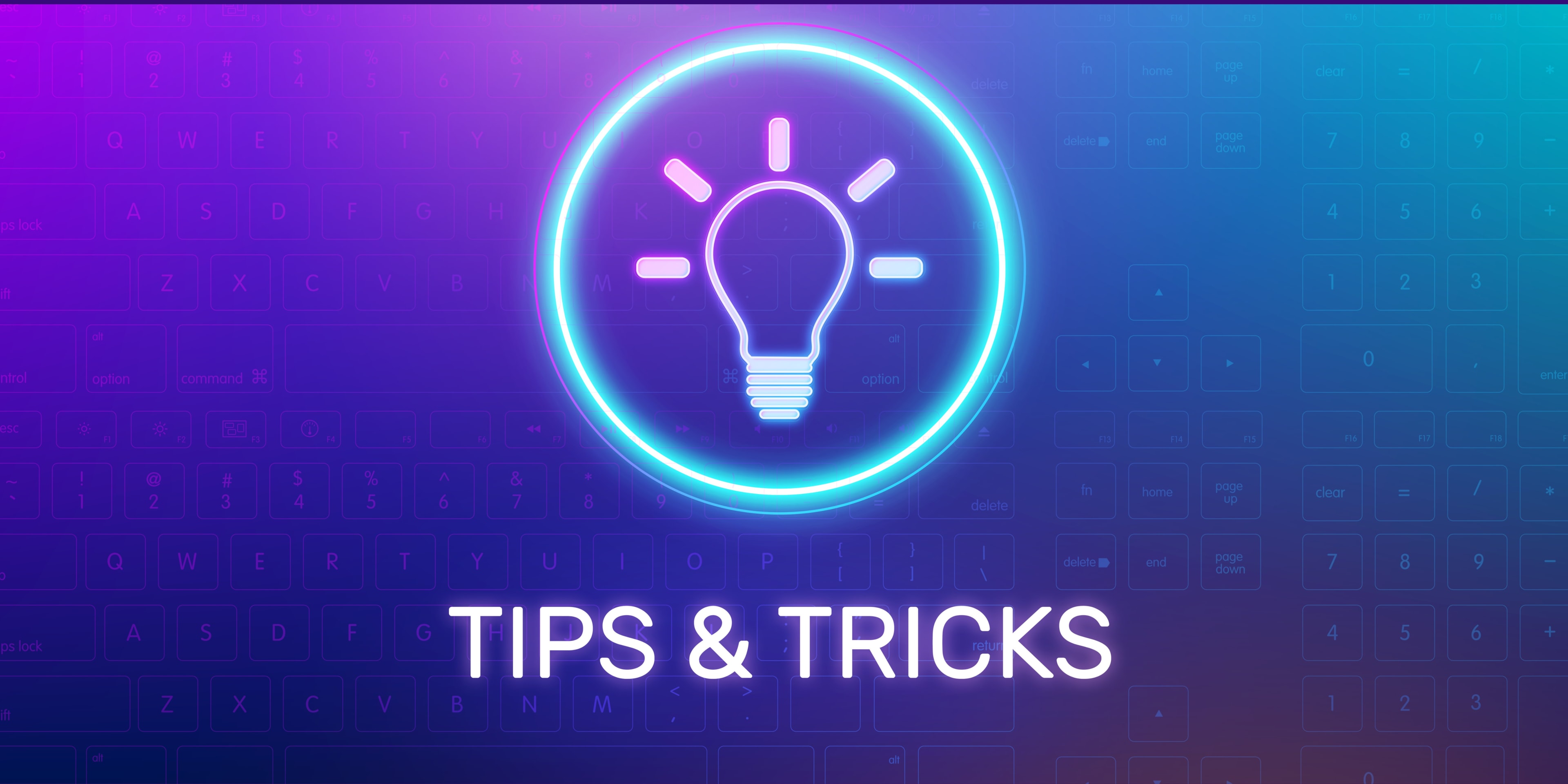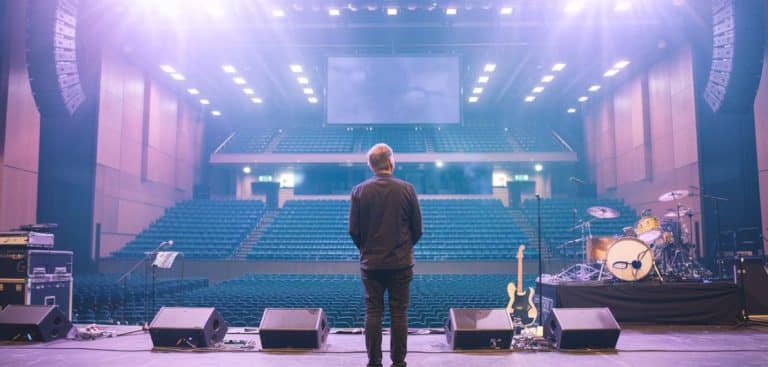Planning music festivals can be an exhilarating experience, but it’s crucial to have a solid financial foundation.
Whether you’re organizing music festivals, food fairs, or cultural celebrations, a well-crafted budget will help you allocate resources effectively and make informed decisions. From venue costs to marketing expenses, and several other costs, every aspect of your music festival needs to be accounted for.
In this guide, we’ll walk you through the essential steps to create a music festival production budget that’ll set your event up for success. You’ll learn how to estimate costs, forecast revenue, manage your finances and save money efficiently.
- Create a comprehensive budget framework that identifies all revenue sources and categorizes expenses into fixed and variable average music festival costs
- Include key components such as venue and equipment, entertainment, staffing, marketing, permits, and production elements in your budget
- Obtain multiple vendor quotes and account for contingencies (10-15% of total budget) to accurately estimate costs
- Use a spreadsheet with essential columns to build and manage your budget, tracking expenses in real-time
- Conduct a post-festival financial analysis to evaluate actual vs. projected costs and identify areas for future improvement
Understanding Production Budgets for Music Festivals

A music festival production budget serves as a financial roadmap for your event. It outlines all expected costs and revenues associated with the music festival planning and execution.
What Is a Music Festival Production Budget?
A music festival production budget is a comprehensive financial plan that details all anticipated expenses and income for a festival event. This document includes line items for various costs such as venue rental, artist fees, equipment, staff wages, marketing expenses, and security.
It also accounts for projected revenue streams like sales, sponsorships, and merchandise. The budget acts as a financial guide throughout the planning and execution phases of the music festival.
Why Budgeting For Music Festival Expenses is Crucial For Ticket Sales
Budgeting plays a vital role in the success of any festival. It provides a clear financial framework that helps organizers make informed decisions and allocate resources effectively. A well-crafted budget:
- Prevents overspending: Tracks expenses and helps avoid unexpected costs.
- Prioritizes spending: Allocates funds to essential elements that enhance the music festival experience.
- Identifies potential shortfalls: Highlights areas where additional funding or cost-cutting measures may be necessary.
- Attracts investors: Demonstrates financial responsibility to potential sponsors and partners.
- Measures profitability: Allows for accurate assessment of the festival’s financial performance.
By creating a detailed production budget, music festival organizers gain better control over their finances and increase the likelihood of hosting a successful and financially viable event.
Pre-Planning Steps

Analyze Your Target Audience
Identify your music festival’s target demographic by age range income level and interests. Conduct surveys social media polls and focus groups to gather data on attendee preferences budget expectations and willingness to pay.
Use this information to tailor your festival offerings and pricing strategy to match audience demands and spending habits.
Research Past Events and Industry Standards
Examine financial reports and budgets from similar music festivals in your genre and region. Analyze ticket prices vendor fees and sponsorship rates to establish competitive benchmarks.
Contact industry associations for average cost breakdowns on items like sound equipment stage rentals and security services. Use this data to create realistic budget estimates and avoid under or overpricing your event.
Set Financial Goals
Establish clear financial objectives for your music festival including break-even point profit margins and return on investment targets. Determine the minimum number of sold tickets required to cover costs and project potential revenue from additional sources like merchandise and concessions.
Set specific measurable goals for sponsorship acquisition and grant funding to diversify your income streams and reduce financial risk.
Creating Your Music Festival Budget Framework

Identifying Revenue Sources
Start by listing all potential revenue streams for your music festival. Include:
- Ticket sales: General admission, VIP packages, and early bird discounts
- Sponsorships: Corporate partnerships, brand activations, and in-kind donations
- Merchandise: T-shirts, posters, and other branded items
- Food and beverage: Vendor fees, concessions, and alcohol sales
- Parking fees: On-site parking revenue
- Advertising: Program ads, signage, and digital marketing opportunities
Create a spreadsheet to track each revenue source, estimating potential income based on historical data or industry benchmarks. Factor in different scenarios such as low, medium, and high attendance to prepare for various outcomes.
Determining Fixed and Variable Costs
Categorize your expenses into fixed and variable costs:
Fixed costs:
- Venue rental
- Insurance premiums
- Permit fees
- Equipment rentals
- Staff salaries
Variable costs:
- Artist fees
- Marketing expenses
- Security personnel
- Food and beverage supplies
- Merchandise production
Estimate what each could typically cost, considering factors such as event duration, expected attendance, and specific requirements. Research current market rates and obtain multiple quotes for major expenses to ensure accuracy.
Create a separate spreadsheet section for fixed and variable costs, allowing for easy calculation of total expenses and break-even points.
Key Budget Components
A comprehensive budget includes several key components that cover various aspects of festival planning and execution. Each component plays a crucial role in determining how much your music festival costs to take place, ensuring its success.
Venue and Equipment
Venue rental fees and associated costs form a significant portion of your budget. Include expenses for the main event space, parking areas, and any additional facilities needed. Factor in equipment rentals such as stages, sound systems, lighting rigs, generators, and portable restrooms.
Consider security deposits, insurance requirements, and any necessary modifications to the venue.
Entertainment and Talent
Artist fees and performance-related expenses constitute a major budget category. Allocate funds for headliners, supporting acts, and local performers. Consider adding up and coming artists to your music festival’s line up, in addition to headliners and established acts.
Include costs for talent booking agencies, advance fees, travel expenses and accommodations, riders (specific requests from performers), and backstage amenities. Set aside some additional money for royalties and licensing fees for music played during the music festival.
Staffing and Labor
Labor costs encompass a wide range of personnel required to run your music festival smoothly. Budget for all your event staff, from event coordinators, security staff, and ticket collectors, to stage managers, sound engineers, and cleanup crews.
Factor in wages, overtime pay, and any necessary training expenses. Consider costs for volunteer management if applicable. Staffing and labor budgets can vary significantly depending on the expertise of your staff members.
Marketing and Promotion
Marketing expenses cover various strategies to promote your music festival and attract attendees. Allocate funds for digital advertising, social media campaigns, print materials, radio spots, and outdoor advertising.
Include costs for public relations efforts, influencer partnerships, and promotional events leading up to the festival.
Permits and Licenses
Legal requirements and associated fees are crucial budget items. Include costs for event permits, alcohol licenses, food service permits, and music licensing fees. Budget for health and safety inspections, fire marshal approvals, and any necessary insurance policies.
Production Elements
Production costs cover the technical aspects of staging your music festival. Allocate funds for stage design and construction, audio-visual equipment, lighting design, and special effects. Include expenses for backdrop creation, signage production, and any interactive installations or art pieces.
Catering and Concessions
Food and beverage services require careful budgeting. Include costs for catering staff, food preparation equipment, and storage facilities. Factor in expenses for vendor management, health and safety compliance, and waste management. If offering alcohol, budget for liquor licenses and trained bartending staff.
Estimating Costs

Obtaining Vendor Quotes
Obtain accurate vendor quotes to estimate music festival costs. Contact multiple vendors for each service or product category to compare prices and negotiate better deals. Request detailed quotes that include all fees, taxes, and potential additional charges.
Create a spreadsheet to organize and track vendor quotes, listing each item or service, the vendor name, quoted price, and any special terms or conditions. Prioritize vendors with experience in music festival production to ensure quality and reliability.
Accounting for Contingencies
Include a contingency fund in your budget to cover unexpected expenses. Allocate 10-15% of your total budget for contingencies to address unforeseen circumstances or last-minute changes. Identify potential risk factors such as weather-related issues, equipment failures, or talent cancellations.
Create a separate line item for each contingency category in your budget spreadsheet. Review and adjust your contingency fund regularly as you progress through the festival planning stages and gain more accurate cost estimates.
Building Your Budget Document

Choosing a Budget Template
Select a budget template tailored for festival production. Use spreadsheet software like Microsoft Excel or Google Sheets for easy calculations and adjustments. Find pre-made budget templates online or create a custom template based on your specific event needs.
Ensure the template includes sections for income, expenses, and profit/loss calculations.
Essential Columns to Include
Include these essential columns in your production budget:
- Item Description: Detailed name or description of each income or expense item
- Category: Group similar items (e.g., venue costs, marketing expenses)
- Estimated Amount: Projected cost or income for each item
- Actual Amount: Record the real figures as they occur
- Variance: Calculate the difference between estimated and actual amounts
- Notes: Add relevant information or explanations for each item
- Date: Include purchase or income dates for tracking purposes
- Vendor/Source: List the supplier or income source for each item
- Payment Status: Track whether items are paid, unpaid, or partially paid
- Budget Percentage: Calculate each item’s percentage of the total budget
Create separate sections for income and expenses to maintain a clear overview of your music festival’s financial status. Use formulas to automate calculations and update totals in real-time as you input data.
Managing Your Budget

Effective budget management ensures that music festivals stays financially on track. Implement these strategies to maintain control over your music festival production budget:
Tracking Expenses in Real-Time
Monitor your music festival expenses as they occur to maintain an accurate financial picture. Use cloud-based accounting software to make updates instantly from multiple devices. Set up automated alerts for when specific budget categories approach their limits.
Create a system for team members to submit receipts digitally, allowing for immediate expense tracking. Regularly reconcile your bank statements with your budget to catch any discrepancies early.
Adjusting for Unexpected Costs
Prepare for unforeseen expenses by building a contingency fund into your budget, typically 10-15% of the total budget. Prioritize your payments and identify areas where you can cut costs if necessary. Negotiate flexible terms with vendors to allow for adjustments in case of budget overruns.
Regularly review and update your budget forecasts based on actual spending patterns. Consider alternative solutions or scaled-down options for high-cost items to maintain budget flexibility.
Post-Festival Financial Analysis

Evaluating Actual vs. Projected Costs
Compare your actual music festival payments against the projected costs in your budget. Create a markdown table listing each budget category, projected cost, actual cost, and variance. Calculate the percentage difference for each line item to identify significant discrepancies. Analyze areas where you overspent or underspent, focusing on items with variances exceeding 10%. Review vendor invoices and receipts to verify all charges and identify any billing errors or unexpected fees.
Identifying Areas for Future Improvement
Examine categories with the largest variances to determine the root causes of discrepancies. For overspent areas, consider strategies to reduce costs in future music festivals, such as negotiating better rates with vendors or finding alternative suppliers.
For underspent categories, evaluate if quality was compromised or if you can allocate those funds more effectively in the future. Create a prioritized list of actionable improvements based on your analysis, including specific cost-saving measures and revenue-generating ideas for your next festival budget.
Tips for Successful Festival Budgeting

Prioritizing Expenditures
Rank festival expenditure based on their impact on attendee experience and operational necessity. Allocate the largest portions of your budget to essential elements such as venue rental, talent fees, and sound equipment. Trim costs on non-essential items like decorations or promotional materials. Create a tiered system for expenditures:
- Must-haves: Core elements crucial for the festival’s success
- Nice-to-haves: Features that enhance the experience but aren’t critical
- Optional extras: Items to include only if the budget allows
Regularly review and adjust your priorities as the planning progresses to ensure optimal resource allocation.
Seeking Sponsorships and Partnerships
Secure sponsorships and partnerships to offset costs and boost your festival’s financial health. Research potential sponsors whose audience aligns with your festival’s demographic. Develop tailored sponsorship packages offering various levels of exposure and benefits:
- Title sponsorship: Prominent branding throughout the festival
- Stage sponsorship: Naming rights for specific performance areas
- Product placement: Integrated brand presence in festival activities
- In-kind sponsorships: Goods or services provided instead of cash
Approach local businesses for mutually beneficial partnerships, such as:
- Food vendors: Revenue sharing in exchange for booth space
- Transportation companies: Discounted services for attendees
- Hotels: Room blocks at special rates for festival-goers
Cultivate long-term relationships with sponsors and partners to secure ongoing support for future events.
Creating a comprehensive festival production budget is crucial for success. By analyzing your audience diligently in advance by researching past events and setting clear financial goals, you’ll establish a solid foundation.
Remember to stay flexible adjust your budget as needed and always prepare for unexpected costs. Prioritize what delivers the most impact and focus on building strong partnerships with sponsors. With careful planning and ongoing analysis you’ll create unforgettable music festivals that not only meet but exceed your financial objectives. Keep refining your approach and you’ll be well on your way to producing successful events year after year.
What is the first step in creating a festival production budget?
The first step is analyzing your potential audience and researching past events. This helps you understand attendee preferences and expectations, allowing you to set realistic financial goals. By examining previous music festivals, you can gain insights into potential costs and revenue streams, providing a solid foundation for your budget planning.
How can I identify potential revenue sources for my festival?
Key revenue sources include ticket sales, sponsorships, and merchandise. Analyze your audience to determine appropriate ticket prices. Research potential sponsors whose brand aligns with your festival’s theme. Consider merchandise options that appeal to attendees. Diversifying income streams helps create a more stable financial foundation for your event.
What should be included in your budget document?
A comprehensive budget document should include projected income from all sources, detailed expense categories (e.g., venue, talent, marketing, staff), and contingency funds for unexpected costs. Break down each category into specific line items. Include timeline-based cash flow projections to ensure proper fund allocation throughout the planning and execution phases.
How can I manage expenses in real-time during the festival?
Implement a robust tracking system to monitor expenses as they occur. Use digital tools or apps designed for event budgeting to update costs in real-time. Assign team members to oversee specific budget areas and report regularly. Set up alerts for when payments approach or exceed allocated amounts. This proactive approach helps prevent overspending and allows for quick adjustments if needed.
What strategies can I use to improve my festival’s financial performance?
After the event, conduct a thorough financial analysis comparing actual expenses to projected costs. Identify areas for improvement, such as negotiating better rates with vendors or reallocating funds to higher-impact activities. Prioritize expenditures based on their impact on attendee experience and overall event success. Develop tailored sponsorship packages to attract more partners and offset costs.
How important are sponsorships for your budget?
Sponsorships are crucial for your budget as they can significantly offset costs and provide additional resources. Develop attractive sponsorship packages that offer value to potential partners. Focus on cultivating long-term relationships with sponsors to ensure ongoing support for future events. Align sponsorship opportunities with your festival’s theme and audience to create mutually beneficial partnerships.
You May Also Like:
Music Festival Marketing: The Ultimate Guide to Boosting Ticket Sales and Buzz
Why Event Organizers Need To Be Aware Of The Best Innovations In Live Sound



